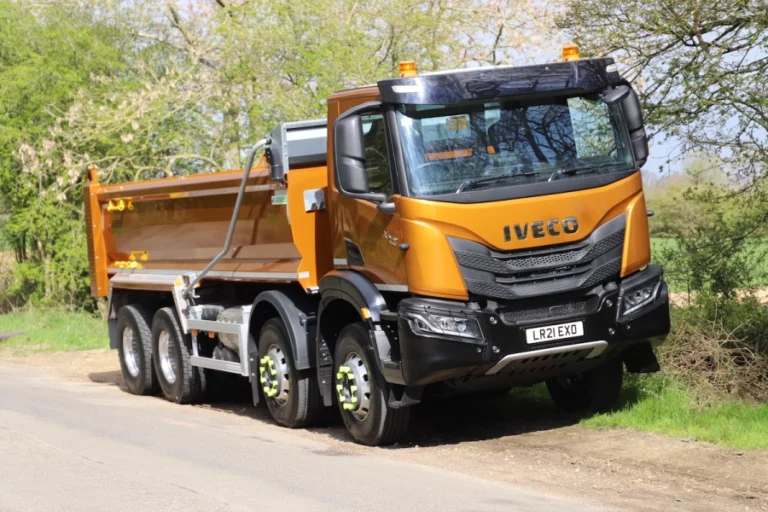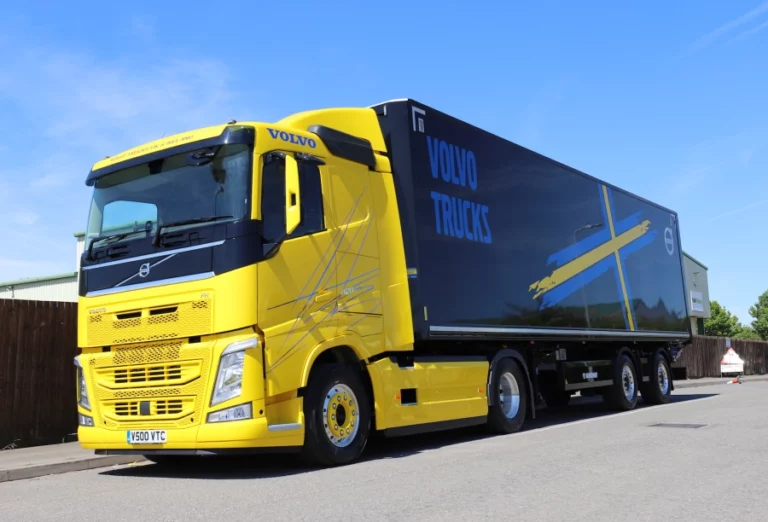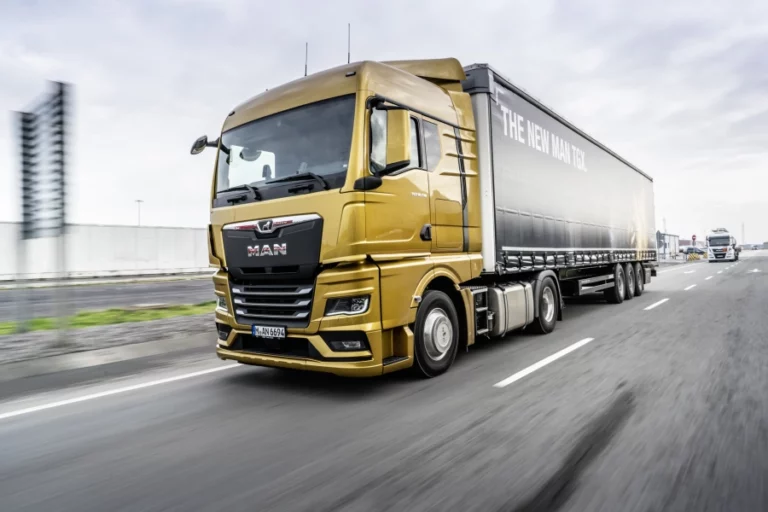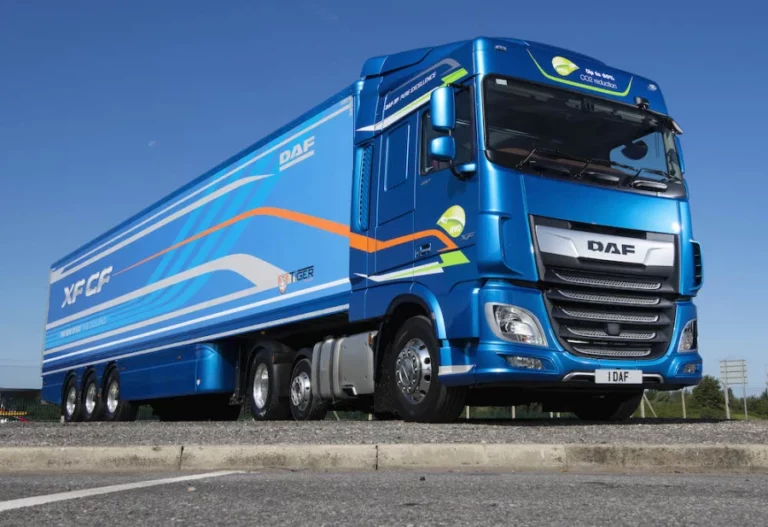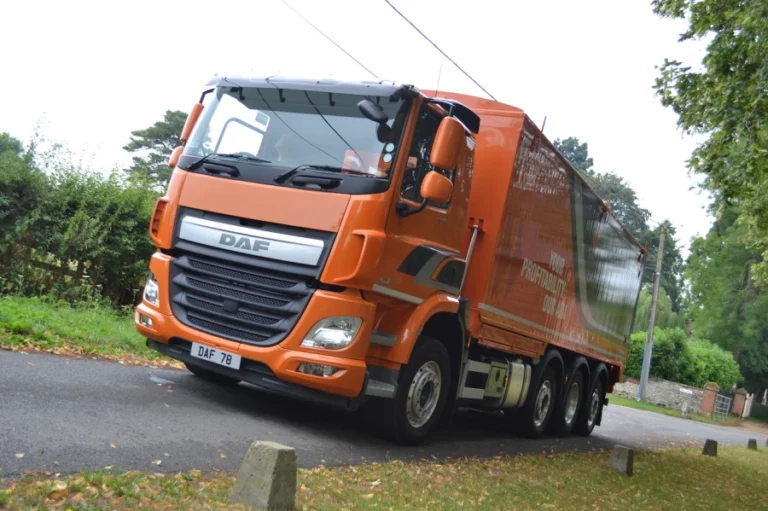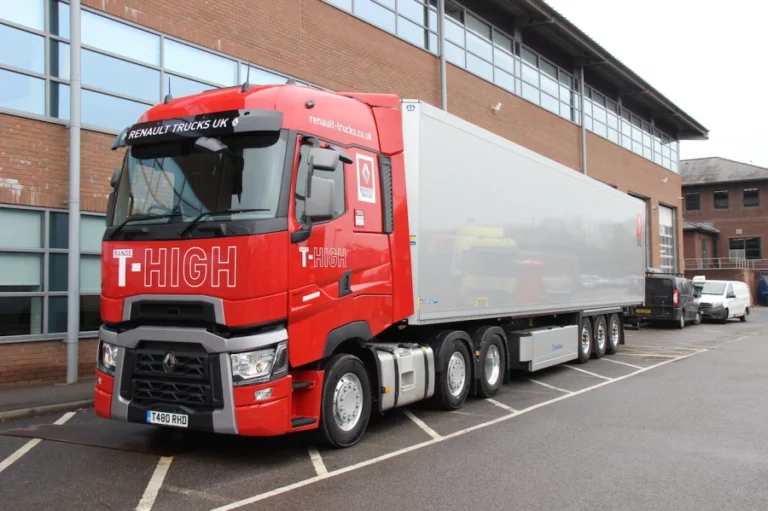As part of a recent range overhaul, the new Iveco X-WAY construction chassis models are now available for UK operators. Trucking takes a traditional eight-legger out for a spin to see if it offers much improvement its predecessor.
The demand for competent eight-wheel tippers that are as comfortable operating off-road as much as they are on the tarmac is heating up. With HS2 construction in full swing and set to continue for several years yet, these versatile tippers are going to be even more in demand.
Beefed-up chassis are not just suitable for tippers – they are useful for tankers, vacuum tankers, fuel tankers and a host of other applications that can use the tried-and-tested 8×4.
It’s a sector where all manufacturers have a range of products, many of them recently upgraded and the product range enhanced or overhauled. There’s Merc’s Arocs, Scania’s XT, Volvo’s FMX, Renault’s Range K – and MAN and DAF have similar models; they just don’t give them a different badge. And then there is the subject of this road test: the Iveco X-WAY.
This truck is one of the newest on the forecourts. The name is a tad misleading, as X-WAY was used for the outgoing models with the Stralis AT cab. However, the truck we have tested here features the new narrow version of the S-WAY cab. It is most definitely the new model range – and in fact, we are the first to have an extended drive of it.
Technical overview: Iveco X-WAY
The truck we had charge of was an Iveco X-WAY 480 8×4 tipper with the 11.1-litre Cursor 11 Euro 6d engine rated at 480 bhp and offering a hefty 2300 Nm of torque. It had a 12-speed automated ZF Hi-Tronix gearbox.
The cab was the narrow 2300 mm wide AD day variant, but the X-WAY can be specified with this in AT sleeper and high-roof sleeper versions, as well as the full-width 2500 mm AS cab – again with either of the two sleeper choices.
This is not the most powerful engine in the X-WAY range, as the Cursor 9 8.7-litre engine is available in 330, 360, 400 bhp, plus there are 420 and 460 bhp versions of this 11.1-litre engine.
Finally, the big Cursor 13 12.9-litre engine at 510 and 570 bhp are options – and presumably the recently announced 490 and 530 bhp options that have just been added to the range.
Not all of those will be of interest to 8×4 tipper operators, but those are the choices across the whole X-WAY range. It should be stressed and there are limitations – for example, the Cursor 13 is only available with the wide AS cab, the Cursor 11 with the AT, AT and AD cab, and the AT and AD cabs are the only options for the smallest engine. In fairness, there is enough overlap in the range to get the cab and power any operator would want.
There are 16-speed automatic ’boxes available on the Cursor 13 models, while a 16-speed manual can be spec’d for the Cursor 9 and 11 models with their relevant cab choices, should anyone want one. Some of the gearbox choices are dependent on the rear axle – be they single reduction or hub reduction.
The wheelbase on our truck was 5020 mm with a double-drive rear bogie with parabolic suspension at front and rear. Each front axle is rated at 8000 kg and the rear bogie at 17,000 kg. Brakes were discs all round.
The Iveco X-WAY range is also available as a 4×2, 6×2, 6×4, 8×2 and 8×4 tridem rigids, plus 4×2 and 6×4 tractor units.
On the road
Being so new, the truck had only just arrived at Iveco’s Dunstable facility – so sadly we were unable to have it loaded. That showed, as with 480 bhp under the cab and weighing in a little over 10 tonnes all in, it literally flew until the speed limiter kicked in.
We have seen a tendency for tipper operators – like other sectors – to be slowly creeping up the power stakes. Where 360 was once the norm, that is certainly not the case now, with 400-430 bhp now favoured instead. Even then, we are seeing 450 and even 500 bhp engines specified by some hauliers.
Personally, 480 bhp is overkill and the optimum model would be the 420 bhp – or if you’re paid by the kilo, then the 400 bhp version of the Cursor 9 will optimise earning potential even further.
A lot depends on the actual work you are doing. These kinds of trucks are aimed at hauliers who spend the vast majority of their mileage – say, 80 or 90 per cent – on the tarmac, but have to go off-road onto construction sites to load and unload. They are still likely to do plenty of motorway or A-road driving, so a bit of grunt is understandable.
It is worth pointing out that for more extreme off-road work, the new Iveco T-WAY has just been launched. However, we can’t see that being a massive seller in the UK – and we Iveco may have the same viewpoint as, for some reason, it is [currently at least] not available with the Cursor 11 options.
The route we took was a bit of motorway driving on the nearby M1, then some much more demanding country roads. You might think that’s not the sort of terrain you expect eight-leggers to be on, but if our trip was anything to go by, that couldn’t be further from the truth! We met lots of similar trucks on our drive – we can only assume some construction was going on nearby. Oh, yes – HS2.
But it gave us an ideal opportunity to see how the truck handled, albeit unloaded. Iveco’s new range is a big improvement on the outgoing Stralis. The eight-legger market has been a big part of its portfolio since the days of Magirus Deutz, and when the famous German brand was dropped, Iveco rook on the mantle with its Trakker models of various cab types – and they have been popular ever since.
But like so many sectors, it’s pretty cutthroat with all the major manufacturers offering on- and off-road 8×4 chassis. The demise of Hino in the UK has helped all the ‘big seven’ pick up more sales in this sector since Euro 6 became mandatory.
Quality drive
The Iveco X-WAY handled sublimely. It was easy to handle, and especially easy to bring to a stop when necessary. The engine brake was superb, as we have come to expect for Ivecos. The steering was light and effortless, and the truck was so easy to drive; almost relaxing. It’s quite manoeuvrable as well for what is such a traditionally cumbersome chassis arrangement.
At one point we encountered some nose-to-tail, barely moving traffic, and it was sensible to do a three-point turn at an adjacent junction. In this manoeuvre, the truck was excellent – other vehicles may have needed an extra shunt.
As we mentioned, this truck has plenty of power; and while that might be ideal if you’re operating a lot in the Highlands, Pennines, Lake District or indeed anywhere with hills, then it’s probably more power than you’ll ever need. If your work can handle it, the 400 bhp Cursor 9 is a good compromise to save on fuel bills.
That said, while there might not too many ‘just in time’ and time-sensitive jobs we can think of in tipper work, if you are doing lots of short repeat runs, a minute or two off each trip thanks to better acceleration might actually mean you can cram in an extra trip a day. In this respect, having some extra oomph could be worth thinking about.
The dash is clear and functional, and while it lacks some of the ‘wow’ factor of some of its competitors, it’s not really an issue for this market. The gearbox buttons are easy to use and the new ignition key set-up is very ‘car-like’.
Verdict: Iveco X-WAY
Iveco’s new product is a vast improvement on the outgoing, noticeably dated Stralis models – and that has certainly been proven by the new S-WAY for general haulage. Tippers present a different proposition: they don’t do the same level of mileage, but they need to be sturdy and up to the job.
But also, they need to be profitable. Iveco has always had a reputation for great payloads, and in that respect the Iveco X-WAY really ticks the boxes. It is a good weight and has a wide variety of engine, gearbox, cab and axle options, so it should be easy to get the truck that best suits your business.
The days of dodgy build quality on the brand are long gone. The dealer back-up is not the most comprehensive and, as we have said so many times before, this could be an important factor.
But judging this truck on its own merits, it’s really nice to drive, it’s durable and, if spec’d correctly, it will most certainly be profitable.


